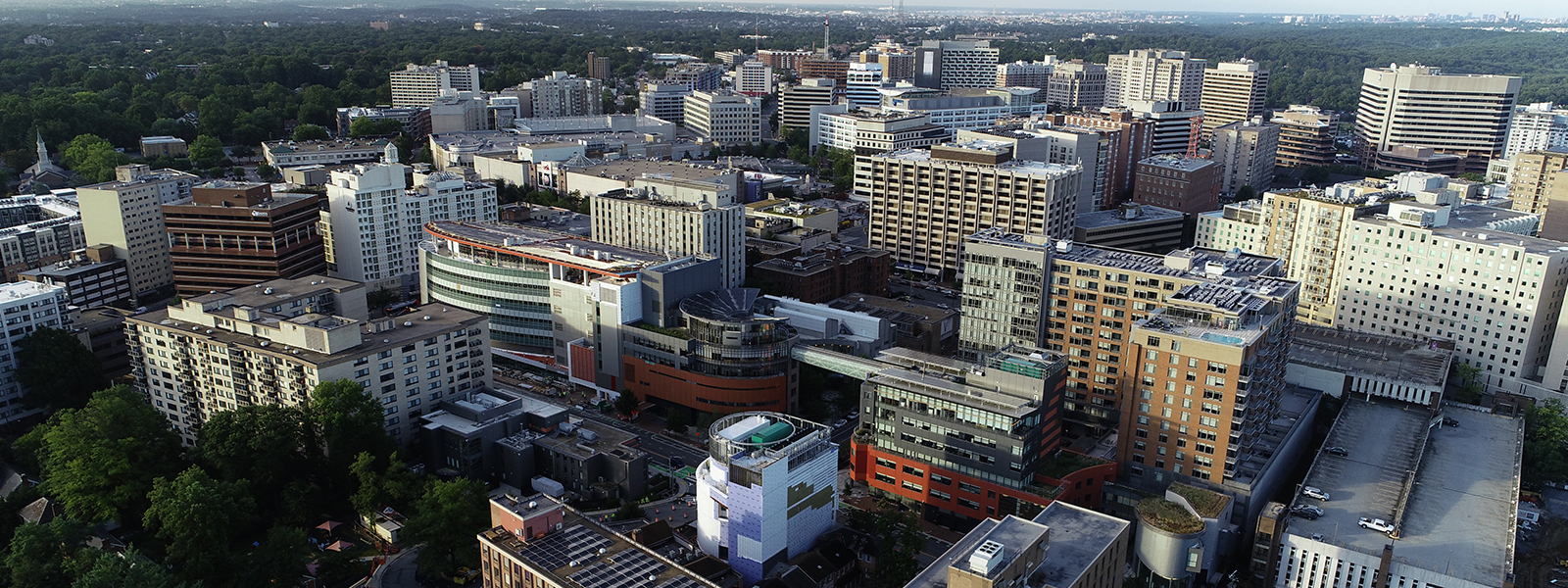Community History
Native Americans utilized the land comprising Silver Spring before the English colonization of Maryland in the mid-1600s. In the mid-1850s, Francis Preston Blair established his plantation in Silver Spring. Blair’s promotion of the area coupled with the opening of present-day Georgia Avenue connecting Washington, D.C. and Brookeville led to further population growth.
The establishment of the Metropolitan Branch of the Baltimore and Ohio Railroad and the Washington, Woodside and Forest Glen Railway in the late 19th Century initiated development and spurred population growth in Silver Spring. New commercial and industrial enterprises emerged along Georgia Avenue from the Baltimore and Ohio station to Colesville Road in the 1920s. Economic growth continued as the Washington, D.C., region experienced significant population increase due to the expansion of the federal government and New Deal programs in the late 1930s. The opening of the Silver Spring Shopping Center at Georgia Avenue and Colesville Road created a thriving retail environment and by the end of World War II, Silver Spring was the second largest community in the state of Maryland. The success of Silver Spring, however, was not available to all people as businesses prohibited service to African Americans. In addition, developers in the early to-mid-twentieth century propagated restrictive racial covenants that barred African Americans and other ethnic groups from homeownership in the surrounding subdivisions.
While retail development stalled in the late-1950s due to the construction of nearby suburban shopping centers and changing consumer habits, Silver Spring’s business district experienced substantial growth the following decade. Multi-story office buildings, hotels, and apartments complexes transformed the area into a regional employment center. Silver Spring continued to diminish as a retail center even with the opening of the Silver Spring Metro Station in 1978. This period of time, however, created affordable housing and businesses opportunities that contributed to the area’s celebrated racial, social, and economic diversity. At the turn of the twenty-first century, redevelopment efforts included a revitalized retail core, the promotion of an arts and entertainment district, and the construction of corporate headquarters for Discovery Communications.
Changes Since 2000
The downtown Silver Spring that we know and love today is largely a product of the recommendations of the 2000 Silver Spring CBD Sector Plan. Many of the stated goals of that plan have largely been achieved; this planning effort is a chance to revisit those design principles and craft new ones for the next twenty years of development in Silver Spring.
The recommendations in the 2000 plan hoped to create a downtown that was pedestrian friendly, transit-oriented, green, a center of civic life, and a vibrant, market-oriented mix of commercial and residential development. Most of the development in downtown Silver Spring over the last twenty years has contributed to at least one of those goals. Some accomplishments of that plan include:
- Civic Center and Veterans Plaza
- Ellsworth Place/retail center
- Paul S. Sarbanes Transit Center
- Silver Spring Library
- New courthouse
- New fire station
- Restored Silver Theater and creation of Arts and Entertainment district
- Residential development over past decade
- Growth of small business community in Fenton Village and Georgia Ave corridors.
Many of the planning efforts over the last decade outlined above were striving to continue the goals of the 2000 Sector Plan, such as the 2014 Greenspace Guidelines, which advanced the goal of a green downtown.
When the 2000 Sector Plan was adopted, Silver Spring hardly could have been considered a downtown. The plan set in motion a transformation that is still continuing today. The elements we plan to explore in the Silver Spring Downtown and Adjacent Communities Plan build on those original goals, and will hopefully position Silver Spring for another successful twenty years of growth.
Silver Spring Then and Now
Previous Planning Initiatives
The 2000 Silver Spring CBD Sector Plan established a planning framework for downtown Silver Spring, and over the last 20 years, Silver Spring has flourished. Today it is one of the most diverse communities in Montgomery County. It is a destination for retail, dining, and arts and entertainment, with numerous development projects currently under construction. A number of planning and urban design initiatives have helped to guide the development of downtown Silver Spring.
- Silver Spring Central Business District Sector Plan: Adopted in 2000. Envisioned a downtown that was transit-oriented, green, pedestrian-friendly with a strong market for both commercial and residential development.
- Silver Spring Greenspace Guidelines: Completed in 2010. Guidelines to support the green spaces suggested in the 2000 Sector Plan.
- Silver Spring Placemaking Initiative: Completed in 2014. Three community charettes that considered “short-term” and “long-term” approaches to placemaking in three distinct sites in Downtown Silver Spring.
- Silver Spring Streetscape Standards: Approved in January 2020. This update of the 1992 Streetscape Standards identifies a hierarchy of streets and intersections for the road network of downtown Silver Spring. These will be reconsidered as part of the sector plan process and will be updated as necessary.
In addition, the Bicycle Master Plan was adopted in 2018 with a vision for a safe and connected bicycle network across the County. In 2018, Montgomery Parks approved the Energized Public Spaces Functional Master Plan. This document used downtown Silver Spring as a test area, but issues a county-wide, data-based approach to understanding the open space assets of the County, both public and private, and how well those spaces are serving the needs of the County. This Functional Master Plan will guide the public space recommendations of the Sector Plan but will not supersede them.
In recent years, the County Council and the Maryland-National Capital Park and Planning Commission have approved and adopted a number of sector plans for communities surrounding downtown Silver Spring:
